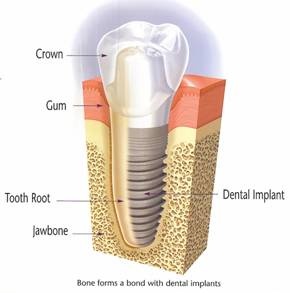 While your teeth may have been designed to last you an entire lifetime, things happen and you can instantly lose a pearly white or two. But just because a dental tragedy has happened does not mean there’s no reason for you to smile anymore. Dental implants have given patients not just the ability to smile but also to talk and eat without fear of embarrassment.
While your teeth may have been designed to last you an entire lifetime, things happen and you can instantly lose a pearly white or two. But just because a dental tragedy has happened does not mean there’s no reason for you to smile anymore. Dental implants have given patients not just the ability to smile but also to talk and eat without fear of embarrassment.
What are dental implants?
Dental implants are artificial roots which are attached deep within your gum and bone tissues. The stability of artificial roots is further strengthened because of the process of osseointegration which the dental implants undergo. Osseointegration is the process of the metal implant becoming fused with the bone tissues as the entire complex heals. There is only metal which can undergo osseointegration and that is titanium. For this reason, dental implants are actually made using pure titanium or titanium alloy.
How is the procedure done?
Phase 1. On the spot where the dental implant will be, your dentist will remove a patch of gum tissue to expose the underlying bone tissue. Your dentist can then drill a hole through the bone tissue and secure the dental implant in, after which your dentist will re-stitch the gum tissue to cover the dental implant.
Phase 2. Once the gum tissue and the dental implant have healed, your dentist can proceed with the second part of the procedure. This phase involves attaching a rod to the dental implant. The rod will serve as the holder of the dental prosthesis, such as the crown or denture, which will be seen above the surface of the gum line.
Phase 3. The actual attachment of the crown or the dentures will be done only when the dental implant-and-rod complex has healed completely. Crowns may be cemented or screwed into place.
How is the pain managed during the entire procedure?
Because the dental implant procedure is considered a form of oral surgery, you can expect some degree of discomfort. Most cases of dental implant procedures are done with local anaesthesia. However, patients with lower pain thresholds have the option to go for IV sedation or other forms of sedation.
Individuals with dental anxiety should share their concerns with their dentist while discussing how to go about with the procedure. Doing so will give the dentist a heads up and will allow him or her to arrange better means to make the procedure less uncomfortable for the patient.
Image Courtesy Pinterest


Get Social